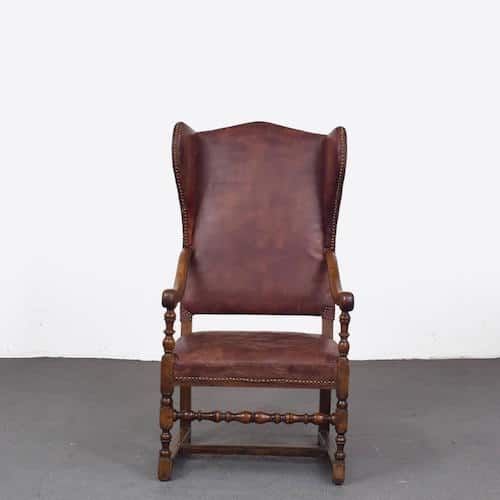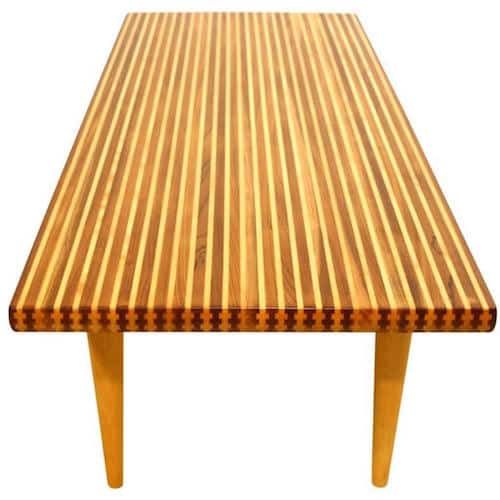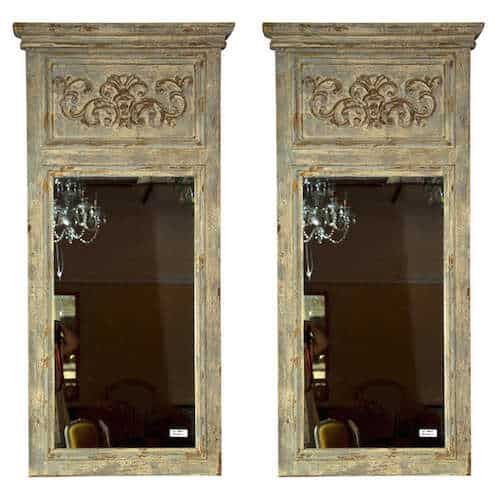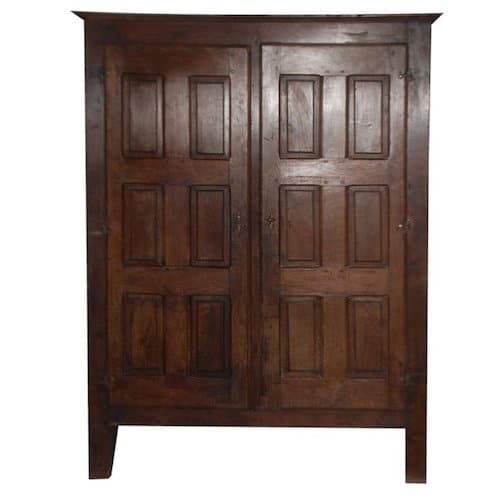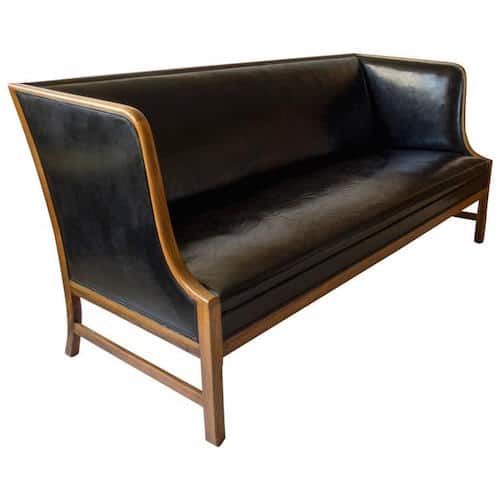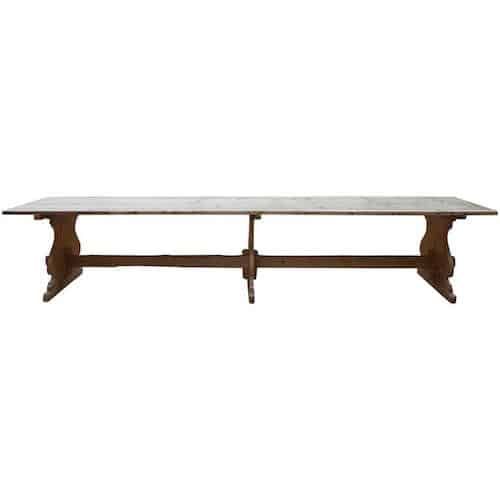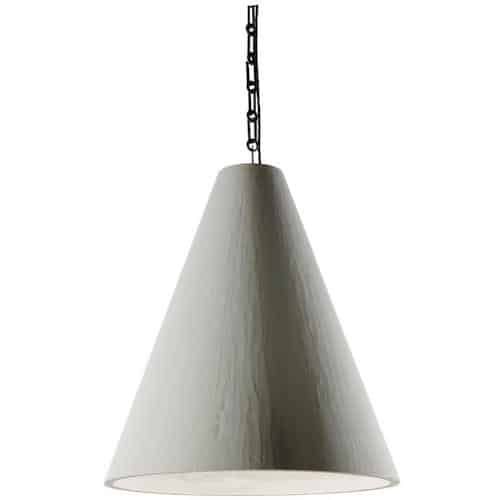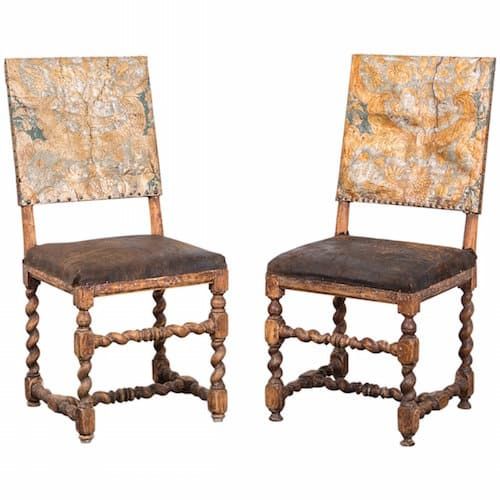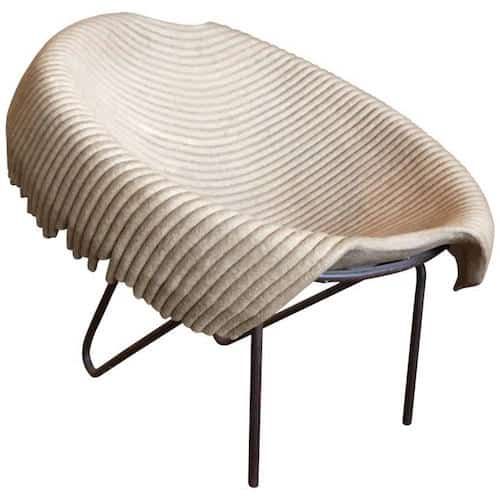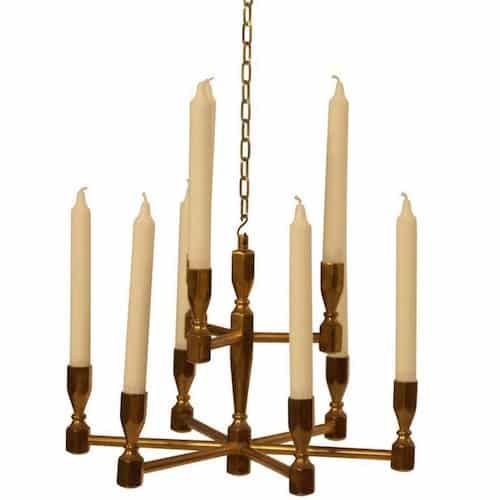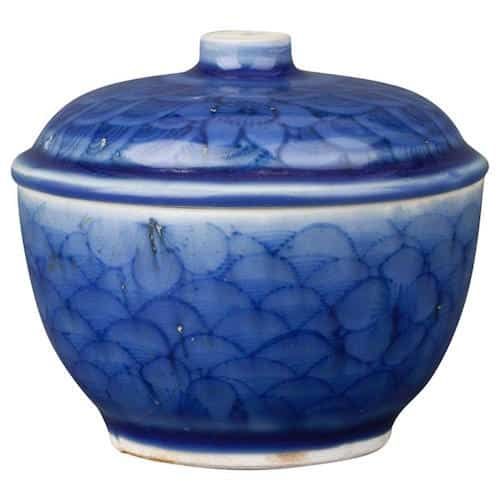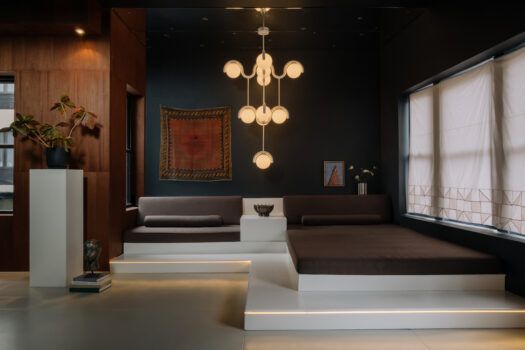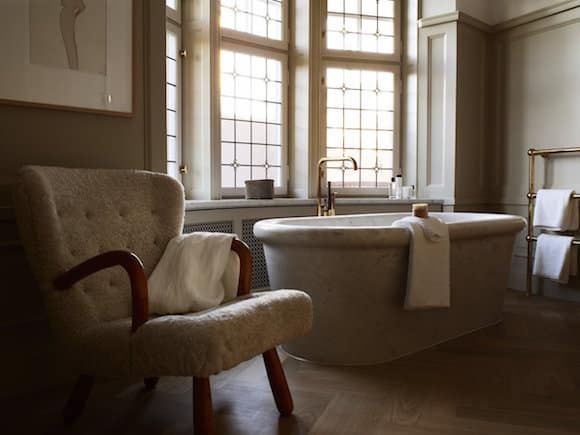
Simple comforts come in the form of a Philip Arctander Clam chair and a stone tub in a bathroom at the Ett Hem guesthouse in Stockholm, which was designed by Studioilse. Photo by Magnus Marding
Interior design sensibilities come in waves. Extreme waves. Two years ago, Marie Kondo revolutionized the concept of minimalism with the KonMari Method, her battle cry for decluttering. Hygge, that oh-so Danish art of thoroughly cozy living reigned over this past winter. And now? It’s due time that, in this era of heightened political polarity, the design world settle upon a way of living that is far more balanced. Enter the Swedish concept of lagom, pronounced la like “law” and gom as in “prom.”
The lifestyle is best understood as defined by a native. “Lagom is said to come from the Swedish words laget om, meaning something — like a cup or pot — that was passed around the table to be just enough for everybody. It’s not too much and not too little. It’s just right,” says Liza Laserow, a Swedish furniture specialist and partner at Laserow Antiques & Interior Design.
Lagom is an integral part of the Swedish national psyche. “It affects the way we dress and how we decorate our homes. It’s a well-balanced style. Beautiful but understated,” says Laserow. It’s all about achieving equilibrium through purposeful design updates. Sound simple? That’s the idea. Take a cue from Goldilocks, and follow the rules of lagom to get your space “just right.”
Less Is More
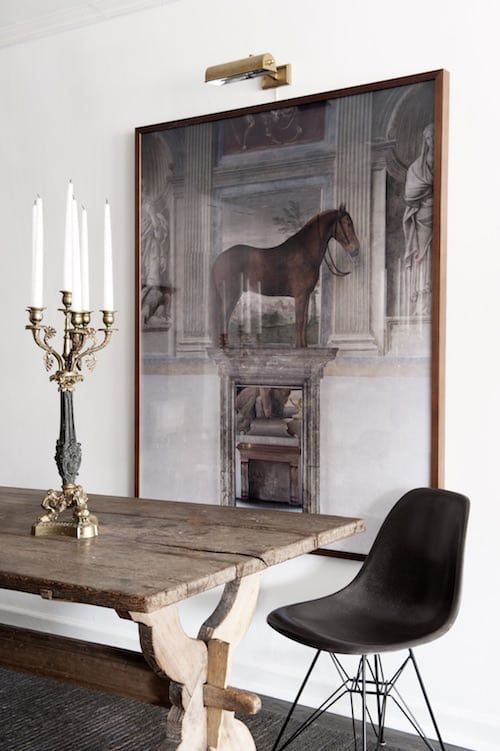
In Liza Laserow’s New York dining room, an Eames chair keeps eclectic company with a rustic trestle table, an ornate candelabrum and contemporary art by Åke E:son Lindman. Photo by Emily Andrews
“Know when to stop,” urges Laserow. “Let there be air around the furniture to give it room to breathe.” She counts Rose Uniacke and Axel Vervoordt as masters at this. Coco Chanel famously said, “Before you leave the house, look in the mirror and take one thing off.” And Laserow follows a similar dictate: “Take one object away when you think you are done.” Her rooms tend to have an airy lightness. They are simultaneously warm with personal objects, while also being streamlined.
Something Old, Something New
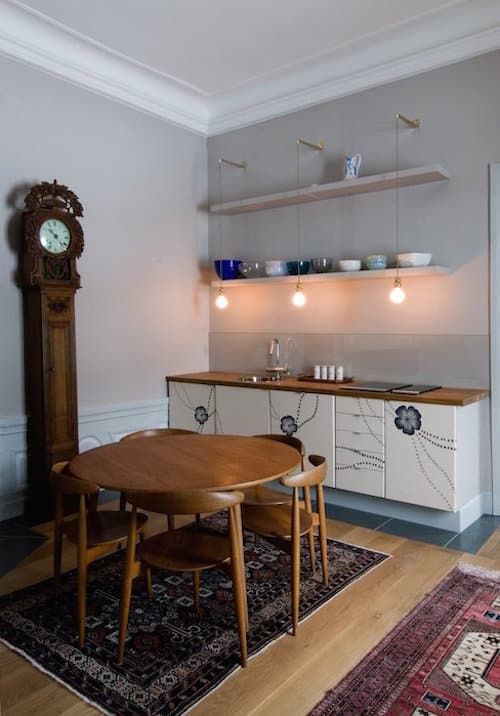
The firm Sigmar created the kitchen of this family castle in Sweden by bringing together several generations’ worth of furnishings: a traditional grandfather clock, mid-century Hans Wegner dining set and contemporary lighting and storage. Photo by Christoffer Rudquist
Pelle Ekelin, a dealer of 20th-century furniture at Moderna Möbelklassiker, grew up outside Lund, in the southern part of Sweden. He has practiced and perfected the art of combining new and old furnishings in his work and at home. Ekelin always approaches a project by understanding the room first — without furniture — asking himself: “Does it talk? Does it have a history? Does it have charisma as is?”
Next, he begins seeking out furnishings, while keeping in mind that “each piece should have a meaning and a purpose.” He mixes Swedish pieces with international designs to create richly textured spaces. Avoid making a room appear too stylized by utilizing antiques that can serve as everyday pieces. Nothing should be too precious.
Character Building
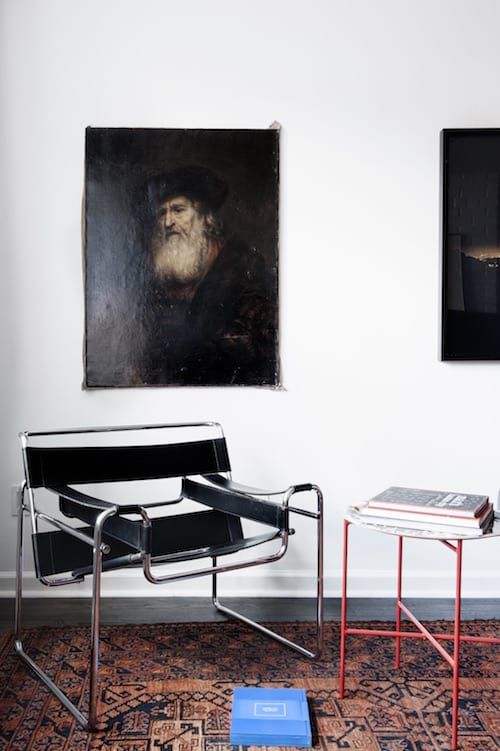
This reading nook in Laserow’s home features a Marcel Breuer Wassily chair, an unframed Rembrandt copy from a flea market and a Svenskt Tenn tray table purchased in Stockholm. Photo by Emily Andrews
Antiques tend to factor largely in lagom-ified interiors. Laserow believes that “antiques are the stars of the design. We simply build the interiors based on the antiques!” Seek out pieces that speak to your tastes and interests — the more wide-ranging the better. “I like the balance of new and old, shiny and rustic,” Laserow affirms. She currently has “a crush on pieces from the Baroque period. They have a gorgeous patina and will give a room perfect, understated character.”
Layered Effect
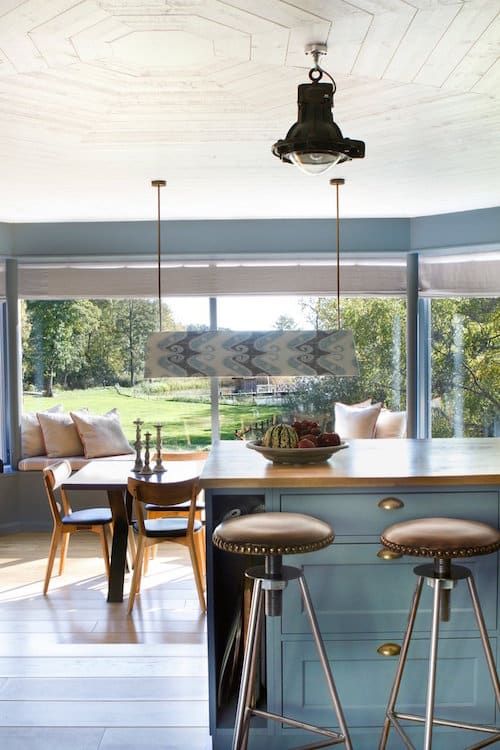
Sigmar’s signature use of natural materials and soothing colors shines through in this Swedish lake house. Photo by Erica Bergsmeds
To make a capacious space feel comfortable and inviting, interior design firm Sigmar fills rooms with a well-measured dose of eclecticism. Cofounder Nina Hertig says that she and her team are passionate about “color and how pieces are made. When you live with something, it needs to do more than just look good in an image. It needs to feel good, too.” She recommends pieces that are useful and functional, while also imbuing a space with thoughtful depth.
Natural materials like wood, in a variety of shades and finishes, play well with modern fixtures and vintage finds. The mix and match approach can be liberating. “I hope there is an element of lagom in everything we do,” Hertig says. Her foremost rule to achieve this? None. “Rules are meant to be broken.”
